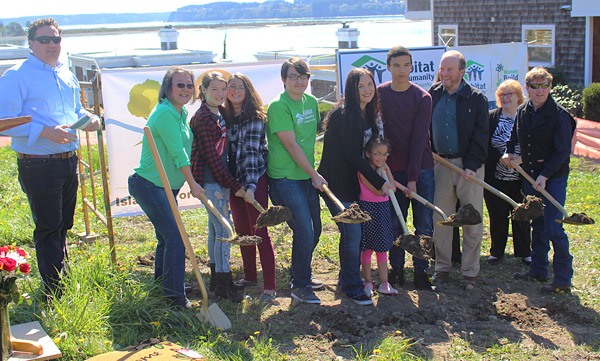Bonnie Patterson wants to make a better life for her children, and she’s willing to put in the hard work to do it.
Her family and another are the first to take part in a multi-family housing project with Habitat for Humanity of Island County.
They’re building a duplex at the corner of Southeast 10th Avenue and Regatta Drive. Each of the families must put in at least 500 hours of work.
When the project is finished, the families will own the homes.
Patterson is raising two children on her own and working full-time. But the money she earns isn’t enough for anything but a low-rent apartment.
“I absolutely appreciate all they do for people,” she said. “I want to better the lives of my children.”
The two-story homes each feature three bedrooms and are about 1,100 square feet. Construction is expected to take about seven months.
The lot is next to a development of condos with views of the water and across the street from the library and Skagit Valley College.
Developers Bill and Kathy Massey donated the land to Saratoga Community Housing, a community land trust. Saratoga will retain ownership of the property and lease it to the families for a minimal amount. That arrangement keeps the costs low for both families.
The architect, Mike Underwood from Underwood and Associates in Anacortes, also donated his time.
The Masseys have worked with other affordable housing projects and are founding board members of Habitat for Humanity of Island County and Saratoga Community Housing. They’ve donated 12 sites in the Oak Harbor area for Habitat families.
“We’re excited we’re able to fit a multifamily unit here. This is a first for us,” said Mandi Rothman, development director for Habitat. “We’re hoping this will be a blueprint for future builds.”
This project posed some challenges, particularly negotiating the city’s requirements for the project, she said.
Rothman emphasized city officials made the process as smooth as possible.
Some of the neighbors in the nearby waterfront condos also complained to the city about the project. No one approached Habitat directly, Rothman said, and she wished they had.
“Sometimes there’s an attitude of ‘Not in my backyard’ or ‘I don’t want those kind of people in my neighborhood,’” she said. “The best thing we can do is fill (the neighbors) with kindness and information.”
All of Habitat’s families are put through background checks, she said. They go through a rigorous application process. The homes are designed to fit into the character of whatever neighborhood they are being built in.
On this project, the college and the library have agreed to let volunteers park in their lots to keep construction hubbub to a minimum.
“We really are doing our best to keep this as hiccup free as possible for everyone,” she said.



